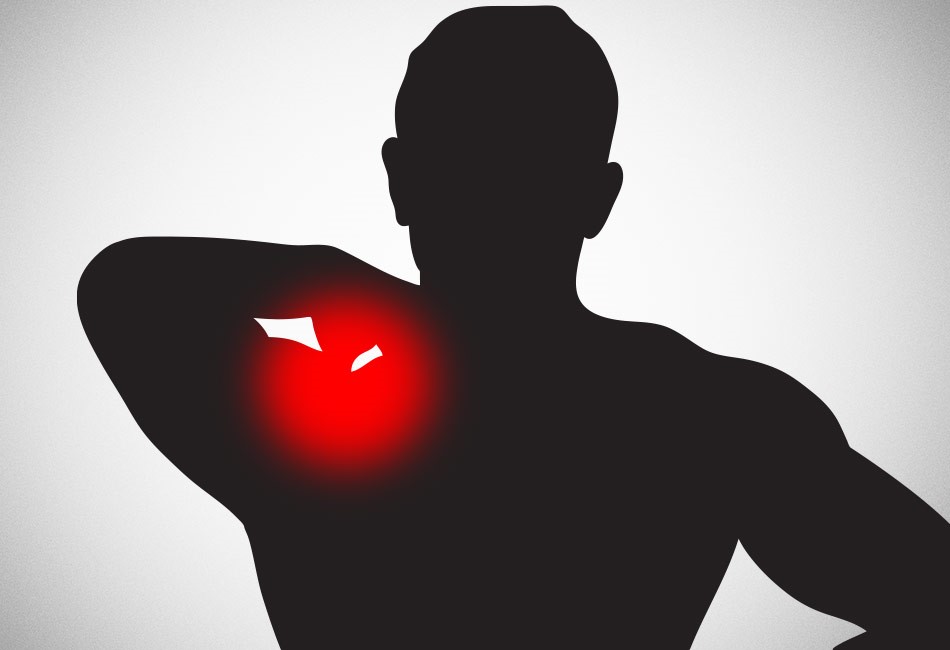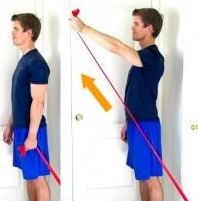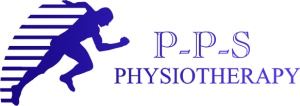Approximately 50 – 70% of shoulder pain is caused from a muscle complex in the shoulder known as the rotator cuff. Though the shoulder pain may have started out of nowhere and have been around for months or even years, this condition CAN be treated and you CAN get your shoulder back to full function.
What is the Rotator Cuff?
The rotator cuff is a group of 4 muscles which go from your shoulder blade to the top of your arm. These muscles are known as supraspinatus, infraspinatus, subscapularis, and teres minor. Though these are relatively small muscles, they play a huge role in keeping the arm attached to the shoulder, allowing a large amount of movement while optimising stability.
Adequate strength and activation in each of the four muscles is required for everyday movements, and tears commonly occur in these muscles which can cause pain and disability.
There are two types of tears you can get in these muscles:
• A partial tear does not go completely through the entire muscle. The size of the tear does not necessarily indicate the level of pain or disability someone may be in. These tears can progress into a full thickness tear.
• A full thickness or complete tear results in the tear going through the entire muscle and often happens at the point where the muscle attaches to the bone. There is a very small likelihood that this may heal on its own and can result in significant levels of pain and disability.

How do I know if I have torn my rotator cuff?
People who have an injury or a tear to the rotator cuff tend to report:
• Pain with movement over the shoulder region. The pain can be either at the front, back, side or over the entire shoulder.
• Pain when sleeping over on the affected side
• Weakness of the arm and difficulty performing day to day activities (combing your hair, getting dressed in the morning, throwing a ball)
By seeing a trained physiotherapist, they will be able to do special tests with your shoulder, assess your strength and movement, and ask you questions about how well your shoulder is functioning and this will allow them to identify whether or not you have a tear in your rotator cuff.
What causes a rotator cuff?
Tears may be partial or full thickness, and occur as the result of an injury such as a fall or lifting a heavy object, but more commonly occur as part of the degenerative process.
The following things increase the likelihood of causing a tear in your rotator cuff muscles:
Age – The prevalence of rotator cuff tears in the population increases as you age. The frequency increases from 5%-10% in people younger than 20 years of age, to 30%-35% in people 50-60, topping out at 60% to 65% in people over 80 years of age
Smoking- Many studies have shown an association between the amount and time you smoke for and the likelihood of having a rotator cuff tear. Some studies have suggested that smoking increases the degeneration of the rotator cuff muscles, can increase the size of the tear, and are more likely to have a tear and feel symptoms.
Occupation – Manual labourers who perform constant overhead movements, who are required to perform repetitive movements, or who need to produce high levels of force from the shoulder are at an increased risk of rotator cuff tears. Research has also shown that people who have played sports with overhead throwing or forceful movements over the head may also be more likely to develop a rotator cuff tear.

How can this shoulder pain get better?
The majority of patients with shoulder pain from a rotator cuff tear often do not need surgery and respond well to a well-structured physiotherapy programs lasting approximately 12 weeks. Patients see a decrease in pain levels, increased in pain free shoulder movement, and get greater levels of function in their shoulder. The programs include stretching and strengthening exercises, shoulder stabilisation exercises, and in the later stages, exercises to simulate the sports and demands that are required of your shoulder. Furthermore, you will be provided strategies to help modify your day to day activities to reduce the stress and pain on your shoulder.


People who do not see any improvements in their shoulder after the rehabilitation might then consider the possibility of having surgery for the rotator cuff repair. The surgery ranges from repairing the torn muscle itself to shaving off parts of the bone that may be causing damage to the muscles. Patients tend to have similar outcomes regardless of the size of the tear, however there tend to be poorer results in patients with worse tendon quality and are advanced in age.
After having surgery, you will commence a rehabilitation program with your physiotherapist so that the shoulder does not develop ongoing stiffness, as well as to gradually increase your strength and get you back to normal function. Furthermore, getting your arm moving and exercising also helps the nourishment and recovery of the tendon to help with the healing process.
Shoulder pain can be a chronic, frustrating, and debilitating injury and it can be treated without the need for surgery. Physiotherapy should be the first line of treatment, including a structured rehabilitation program to increase movement, strength, and stability in the shoulder. If you have a good initial response and improvement in symptoms, physiotherapy should be continued and surgery can be considered after 12 weeks if there are no improvements.
So if you are experiencing long standing shoulder pain, you may have a rotator cuff tear and will benefit from seeing one of our physiotherapists. Give us a call on 9672 6752 (Kellyville) or 9871 2022 (Carlingford) to book an appointment.


